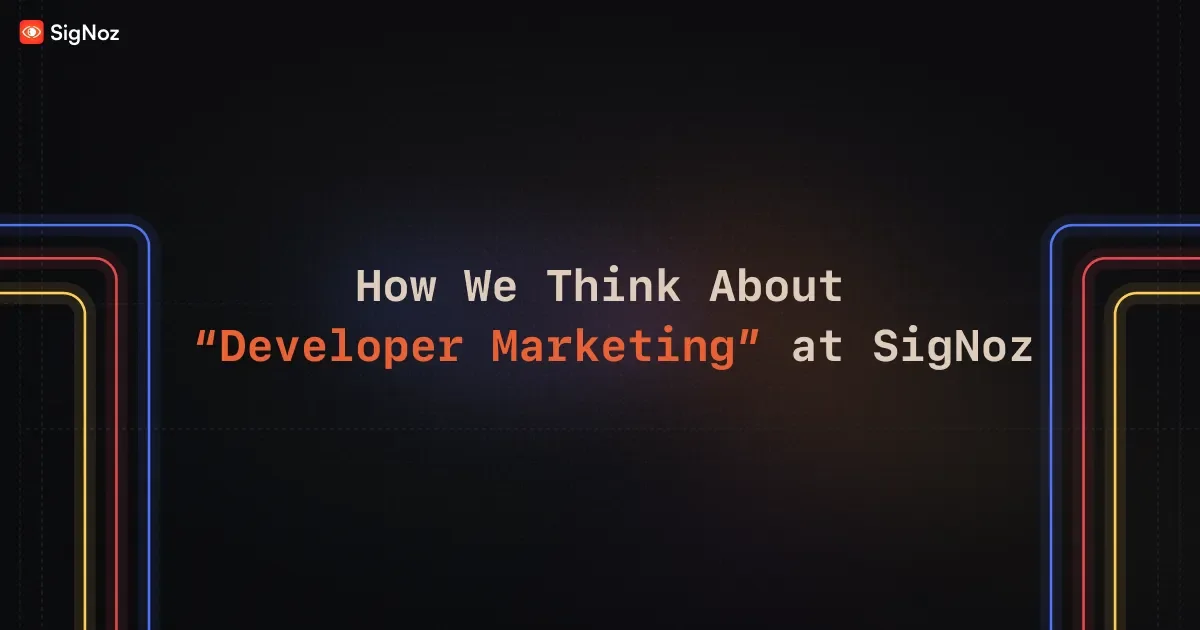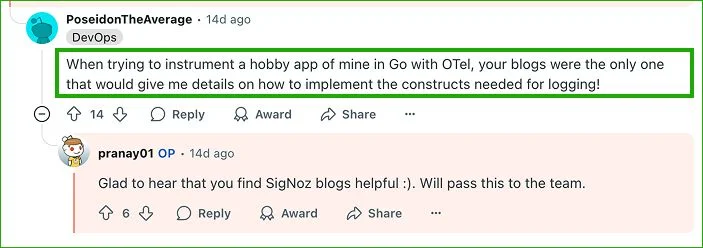“Developers hate marketing.”
Do they, really? I often hear this thrown around on podcasts about DevTools marketing, and while it’s true that developers don’t respond to the same old marketing tactics, they do respond to genuine communication.

The reason developers are hard to “market” to is that they are also the builders of the stuff you want to sell. For most products we use day-to-day, we don’t know how they’re made; we form a vague perception from ads that talk about abstract things—life will somehow get better, you'll somehow be transformed.
But selling software to a software engineer is like selling a car to the mechanical engineer who builds them. The communication has to be different. They won’t get impressed if you say This car is super fast. They will get suspicious. They'll want to know the specifics: the engine displacement and aspiration, the transmission type, and the suspension geometry.
Developers do not hate marketing. They hate the feeling of being tricked. They hate clickbait, shallow content that wastes their time, and products that don't deliver on their promises. As builders themselves, they are better equipped than anyone to sense when they are being sold a fantasy.
At SigNoz, we are building a tool for developers, and we’re developers ourselves (in my case, a pseudo-developer). Pranay and Ankit, our founders, decided SigNoz should be fully open-source because they felt an observability tool, which is such a critical part of a developer's workflow, should be open for anyone to see under its hood. There is no black box. And that philosophy trickles down to define our growth efforts.
Our approach to "Developer Marketing" or growth(as we call it internally) includes everything from launch weeks and community building to speaking at conferences and creating viral content for HN, and at the core of all these efforts lies one thing: great content.
The surest way to impress a developer is to tell them, as clearly as possible, what your tool does and what’s under the hood. Good content, when combined with smart discoverability, is more scalable than anything else for companies at any scale.
At SigNoz, we have a high bar for content - be it our blogs or docs.
If you create authentic, deeply helpful content, developers won’t just read it; they will rave about you to their friends. Do this consistently, and you don’t just get users—you build a brand.
And sometimes, they won’t just rave about your product; they will rave about your content too. 😊 (Kudos to Elizabeth in our team).

So how do we think about content and the mindset behind it?
Let’s dig in.
We Treat Content Like a Product, Not a Promotion
The most important shift in mindset is to stop thinking about content as "marketing." We think of it as a product. And like any good product, it must solve a real, painful problem for the intended audience.
A great piece of technical content doesn't just describe a feature; it helps a developer fix a bug at 2 AM, instrument a new framework they're struggling with, or understand a complex concept without getting a headache. Our goal isn't to "convert" a reader. It's to help them solve their problem so effectively that they think, "Wow, this team really gets it."
Our Best Ideas Come From Our Users' Toughest Problems
We don't brainstorm content ideas in a vacuum. Truly understanding our users is half the battle won. Our best ideas come from the "goldmine" of our daily user interactions across our open-source and cloud offerings. Every question in our Slack community, every support ticket, and every user conversation is a potential blog post or a doc.
When we see multiple people getting stuck on the same issue, we know there's a gap on the internet that needs to be filled. That’s our cue to create the definitive resource on that topic. Because we work on new-age technologies like OpenTelemetry, we often create content for which there is no reference. These are the things that go a long way in building trust with our end users.

It's Not Just Writing; It's Extreme Ownership
Creating a good technical article is hard. It requires extensive research, a deep understanding of the user's context, and an obsession with technical accuracy. But publishing it is only half the job.
A technical article is a living, breathing thing. Libraries get updated, code samples break, and new, better ways of doing things emerge. Ownership means you are responsible for that piece of content end-to-end. You make sure the demo is working, you check in for breaking changes, and you update it when new information is available.
This commitment to quality and maintenance is non-negotiable. It's how you build trust, one article at a time.
Putting this philosophy into practice isn't easy. It requires a certain kind of person and a specific culture. For those curious about what it takes to thrive in this environment, here's a look at the core traits of our growth team.
What It Takes: Core Traits of the SigNoz Growth Team
Our growth team is responsible for building awareness for SigNoz and bringing in more users. Below is a glimpse of core traits that we believe are needed to succeed in our roles.
- Be an adult. We are a 100% remote team. That means lots of communication on Slack and collaborating with team members with different daily routines/time zones. You need to be reliable and organised in your communication to operate efficiently. And a lot of it just comes down to being a responsible adult without constant oversight.
- Have a bias for execution. Making things live sooner should always be at the back of your mind. Resolve internal conflicts quickly in favour of making things live. Growth is hard, has more unknowns - and the only thing that can save you from failure is taking more bets.
- Embrace extreme ownership. You own your work end-to-end. Take that extra step to verify things or to make something better than what you were asked to do.
- Be open to feedback, with great attention to detail. You will make mistakes and get feedback. Double down on that feedback to ensure it's not needed again. In a startup, if someone has to give you the same feedback twice, you’re slowing the team down.
- Care about the content you create. Don't do half-assed things. Even if you write a short LinkedIn post, genuinely care about what you've written. Any content out there is a brand interaction that reflects both the product and the people behind it.
- Stay genuinely curious. In a company like ours, where things are evolving fast, curiosity makes the work more enjoyable. Working on the growth of a product like SigNoz can be very fun for curious folks, as it involves learning new things on a daily basis.
The best way to "market" to developers is to stop marketing altogether. Instead, be the most helpful, knowledgeable, and trustworthy resource in your domain. Speak to your audience through your expertise. Solve their problems with such clarity and depth that they can't help but respect the craft. That’s the only “growth hack” that really works.
We’re growing our team and hiring. If you resonate with what we have shared above, consider applying.
